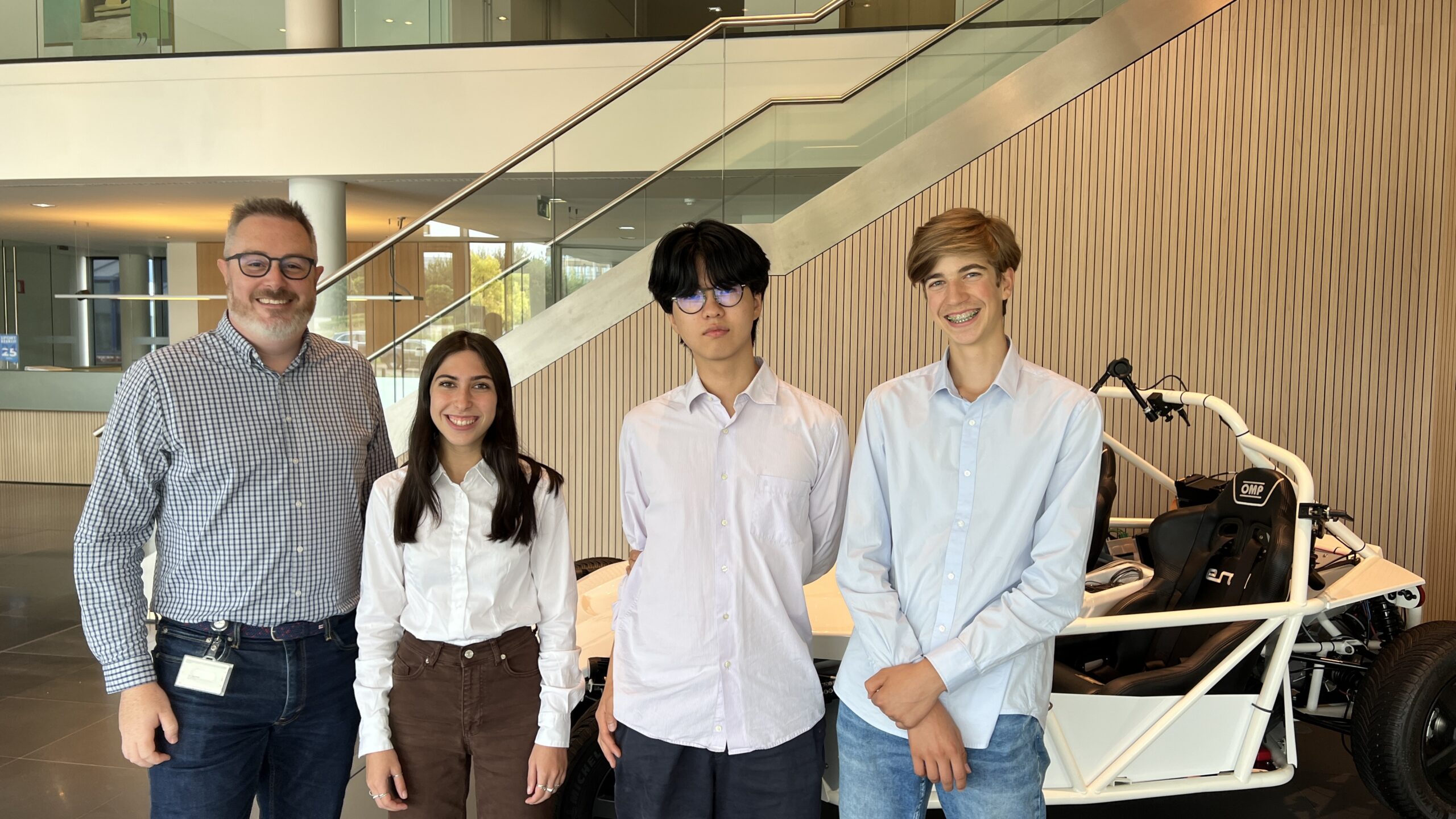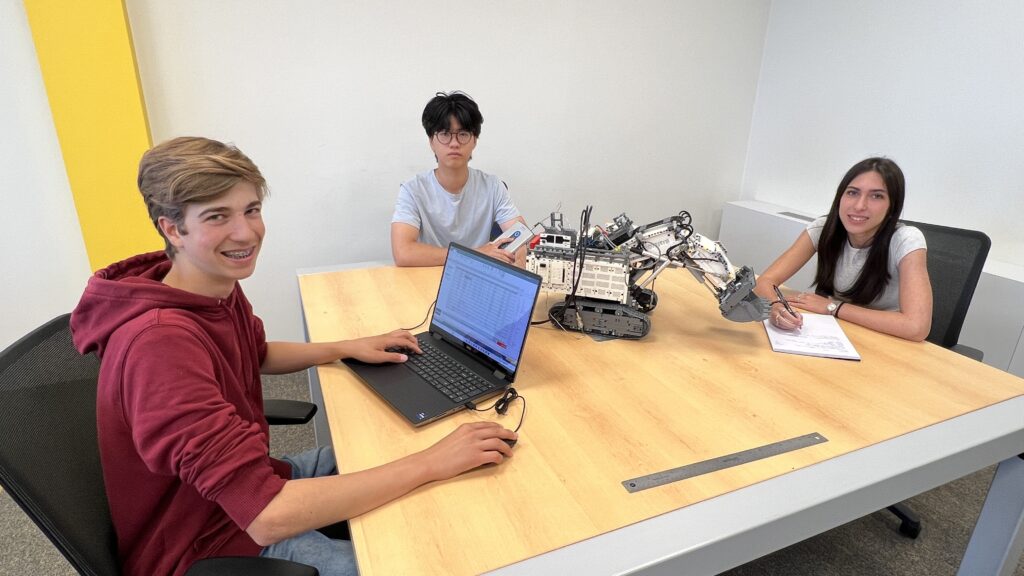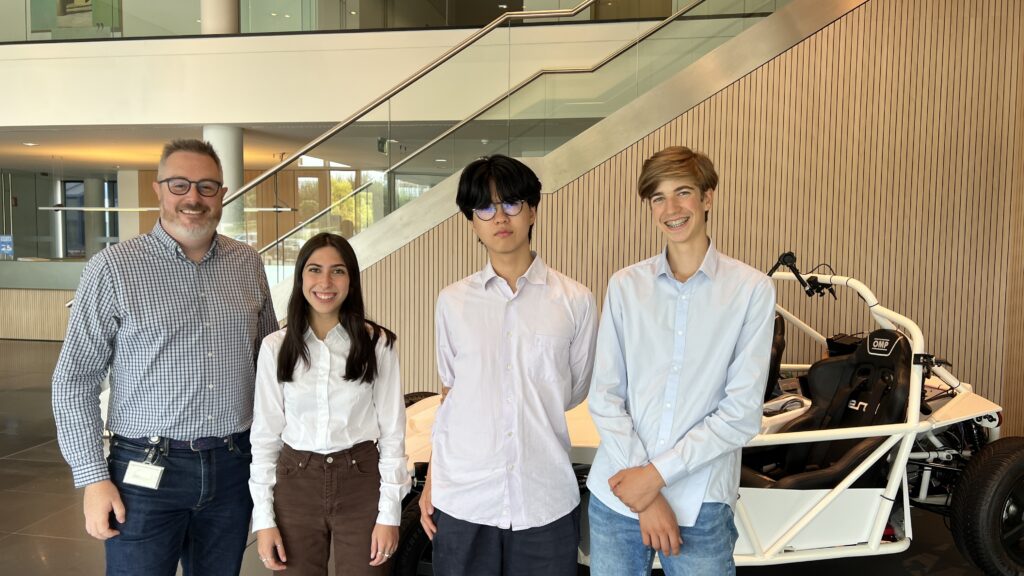The Digital Twin Internship for High School Students

As a parent and a professional deeply invested in innovation, I’ve always felt the need to bridge the gap between youthful dreams and real-world experiences. This was the driving force behind the Digital Twin internship we recently hosted at Siemens Leuven.

The idea for this program took root during the early days of the pandemic. Like many parents, I had the chance to bring my son to the office, where he got a glimpse of what we do at Siemens. At that time, I was heavily involved in the Digital Twin initiative and the XDT project, and I realized how little young people, even my own son, truly understood about what goes on inside a tech company. Children often have big dreams — they want to be doctors, astronauts, inventors — but they rarely get a chance to see what these careers look like in practice. This realization planted the seed for an internship program aimed at high school students, offering them a unique opportunity to explore the professional world before making critical decisions about their future.
I wanted to create an experience that wasn’t just about learning technical skills, but about giving these students a comprehensive view of how a company operates. Over the past two weeks, three high school students joined us at Siemens Leuven, where they were immersed in everything from marketing to product management, development, legal, research, and even upper management. At just 16 years old, they were exposed to aspects of business life that most people don’t encounter until much later in their careers. This is the kind of experience I hope to offer my own son when he reaches this age.
The focus on Digital Twins wasn’t accidental. It’s a field I’ve been passionate about for many years, and we had everything in place to make it a hands-on learning experience. The students started with a LEGO excavator — a project that’s straightforward yet rich in learning potential. They installed sensors, calibrated them, and then used Simcenter Testlab to measure actual displacements. They didn’t stop there; they connected these real-world measurements to virtual models in Simcenter Amesim, compressing the model into a Functional Mock-up Unit (FMU) and integrating it back into Testlab. This allowed them to experience how real and virtual worlds can interact, a key concept in the Digital Twin technology.
But beyond the technicalities, what I really wanted them to take away were life lessons. During their time here, we emphasized principles like “Dream, Plan, Do,” and “problems are opportunities.” They learned that thinking big is important, but so is starting small and taking action immediately. We talked about how things don’t always go as planned and how you often find yourself in what I call the ‘valley of despair.’ The key is to push through it.
Watching them work through the challenges, I sometimes worried that I had set the bar too high. But I was genuinely surprised by how they tackled each task and how they interacted with each other. It was fascinating to observe how three very different personalities came together to solve problems — something that’s a crucial part of any job. They got a taste of what it’s like to work with people who think differently, an experience that will serve them well in any future career.
This internship wasn’t just about introducing young minds to cutting-edge technology; it was about preparing them for the real world. I believe that by giving them this early exposure, we’re not just teaching them skills — we’re giving them the confidence and insight to navigate their future, no matter what path they choose.
Alice, Jinan and Niels each shared their experiences on LinkedIn, using their final video to highlight all they achieved over the two weeks. Please take a moment to support these bright young minds and future innovators by giving their posts a like.



